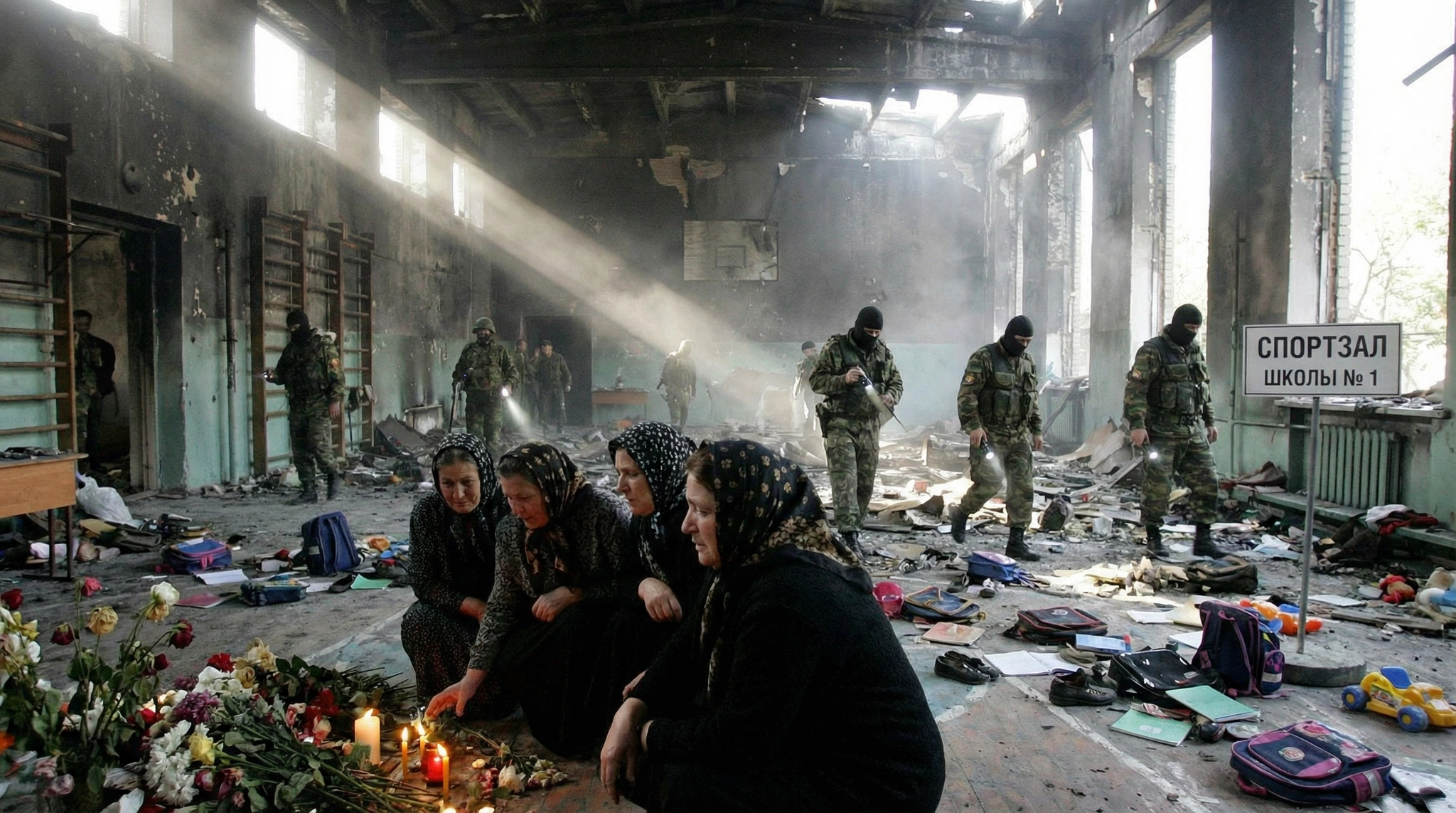The Beslan massacre, also known as the Beslan school siege, was a harrowing terrorist attack that unfolded between and , in North Ossetia, Russia. Over 1,100 people, including more than 777 children, were taken hostage by Chechen militants in School Number One in Beslan.
The three-day ordeal culminated in one of the bloodiest confrontations in modern history, resulting in the deaths of 334 people, 186 of whom were children. This event left a lasting scar on Russia and prompted worldwide reflection on terrorism, crisis management, and the human cost of political violence.

Day 1:
On the first day of school, a day traditionally celebrated with festivities, armed militants stormed the school and herded more than a thousand students, teachers, and parents into the gymnasium. Many hostages were immediately killed to instill fear and assert control.
The militants rigged the building with explosives, threatening mass casualties if their demands were not met. Communication with Russian authorities was limited and unclear, with the attackers' primary demand being the withdrawal of Russian forces from Chechnya.
Day 2:
As negotiations stalled, conditions inside the school deteriorated. Hostages were denied food, water, and medical attention. The situation became increasingly dire, with many children and adults succumbing to dehydration, exhaustion, and injury.
Outside the school, the Russian government faced intense pressure to act, but there were growing concerns about the safety of the hostages, which delayed immediate military intervention. The complexity of coordinating multiple agencies contributed to uncertainty about the best course of action.
Day 3:
The final day of the siege began with negotiations, but the situation quickly spiraled out of control when a series of explosions rocked the gymnasium where most hostages were being held. Chaos erupted, and Russian special forces (Spetsnaz) launched an assault to neutralize the attackers.
The lack of coordination between the various security agencies and the overwhelming firepower deployed led to a catastrophic loss of life. In the end, 31 of the militants were killed, but the tragic toll on the hostages was immeasurable.
The Aftermath and Global Repercussions of the Beslan Massacre
The aftermath of the Beslan siege was marked by widespread grief, outrage, and controversy. While the Russian government declared the operation a victory against terrorism, many criticized the handling of the crisis, particularly the lack of preparation and the disproportionate use of force.
Families of the victims accused the authorities of prioritizing political gain over the safety of hostages.
Globally, the Beslan tragedy underscored the evolving nature of terrorism, where non-state actors target civilians in highly symbolic settings to achieve political goals. The attack also highlighted the challenges of negotiating with terrorists and the moral dilemmas faced by governments when responding to hostage situations.
The use of schools and children as pawns in a larger geopolitical conflict shocked the international community and raised questions about the efficacy of counterterrorism strategies and protective policies for civilian institutions.
Long-Term Impact on Russian Society and Policy
In the years following Beslan, the Russian government implemented a series of measures aimed at strengthening national security. These measures included:
- Increased surveillance and intelligence-gathering;
- Stricter anti-terrorism laws and enforcement;
- Consolidation of political power under President Vladimir Putin.
The massacre also had a profound psychological impact on Russian society, reinforcing a sense of vulnerability and fear, while fostering a demand for stronger government control in the face of terrorism.
The Beslan school siege remains one of the most tragic events in post-Soviet Russia and continues to influence both domestic policy and international perspectives on terrorism. For many, the tragedy serves as a reminder of the human cost of political violence and the lasting scars it leaves on societies.
Conclusion
The Beslan massacre was more than a national tragedy; it was a defining moment in the global understanding of terrorism and the moral complexities of crisis response. While the attackers sought to force political concessions from the Russian government, their actions resulted in a devastating loss of life and an indelible mark on the international community’s consciousness.
Today, the memory of Beslan calls for continued vigilance against terrorism, more effective crisis management, and a commitment to protecting the most vulnerable members of society—our children. Emphasizing preparedness, transparent accountability, and community resilience remains essential to prevent similar tragedies.